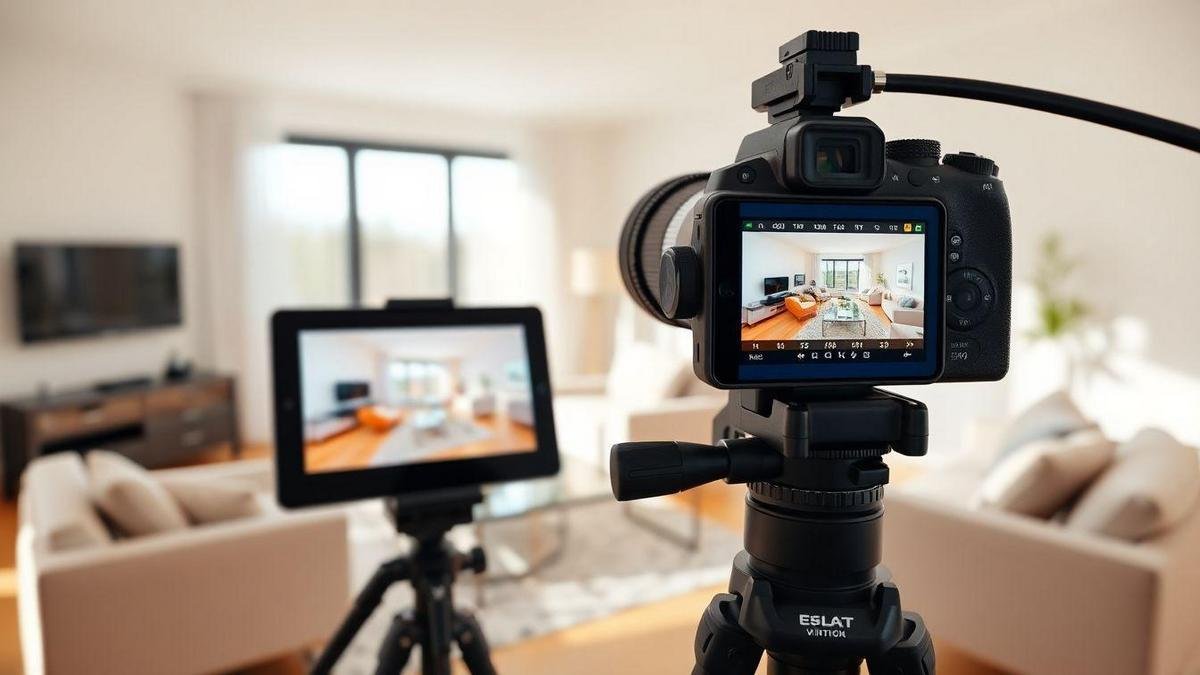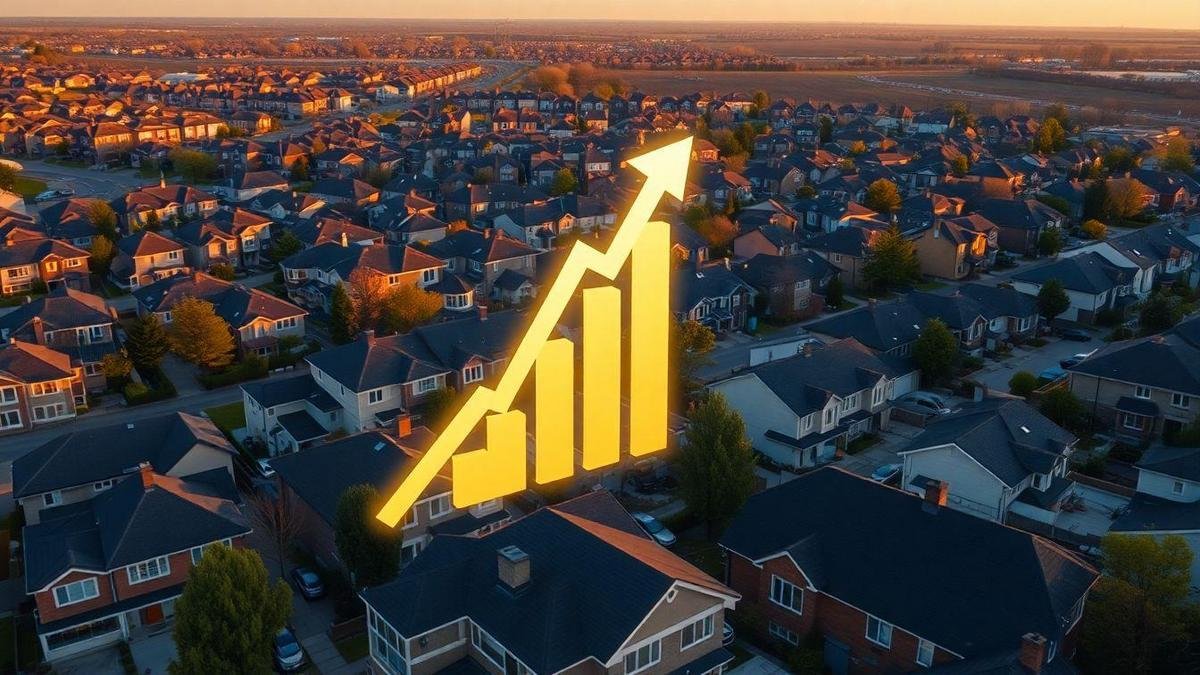How to increase real estate conversion rates
This guide shows agents how to turn listings into signed deals with practical, ready-to‑implement tactics. It covers website layout, page speed and mobile design, lead forms and navigation, standout photos and virtual tours, effective CTAs, lead generation and nurture systems, CRM tracking, targeted ads, open‑house optimization, and pricing strategies to speed sales.
Key takeaway
- Use clear, high‑quality photos and virtual tours.
- Write short listings that highlight benefits and include a clear CTA.
- Respond quickly to leads by phone, chat, or email.
- Simplify contact forms and make booking showings easy.
- Run targeted ads and show real testimonials to build trust.

How to increase real estate conversion rates by optimizing website layout
A clean site layout is like a tidy open house: visitors stay, look around, and ask questions. To answer “How to increase real estate conversion rates,” ensure visitors see the property, price, and contact option without hunting. For hands‑on tweaks that prioritize leads, review a focused checklist on website optimization designed for lead capture.
- Strong hero with one clear CTA above the fold.
- Show high‑quality images and key facts (beds, baths, price) in a visible card.
- Add trust signals: ratings, endorsements, recent local sales.
- Keep search and filters visible so visitors find relevant listings fast.
- Offer multiple contact options: click‑to‑call, chat, form, and scheduling.
Fast pages and mobile‑first design
Speed and mobile design are non‑negotiable. Slow pages lose visitors quickly — use the principles in mobile‑first real estate marketing to prioritize tap targets, forms, and load speed.
- Prioritize page speed: compress images (WebP), enable lazy loading, minify CSS/JS, use a CDN.
- Design mobile‑first: large tap targets, simple menus, easy‑to‑tap forms and CTAs.
- Test on real devices — users should be able to view photos, zoom, and contact in under 30 seconds.
Simple lead forms and clear navigation
Forms and navigation are the handshake and welcome sign. Simplify to capture more leads — pair short forms with automated follow‑ups and a clear funnel, as outlined in resources on lead generation tools and the real estate sales funnel for agents.
- Keep forms short: name, phone, email. Use progressive profiling later.
- Use specific CTAs: “Schedule a Tour”, “Get Price Now”.
- Clear navigation labels: Buy, Rent, Sell, Contact. Include breadcrumbs and filters (price, bedrooms, neighborhood).
- Provide instant options: click‑to‑call, live chat/chatbot.
- After form submit: show a thank‑you message, agent details, and follow‑up timeframe.
Quick website fixes to boost leads (do this this week)
- Compress images and enable lazy loading.
- Replace long forms with a 3‑field lead capture.
- Add a sticky CTA button on mobile.
- Show agent photo and phone on every listing.
- Reduce top navigation items to 5 or fewer.
- Add a visible trust badge.
- Enable click‑to‑call and map links on mobile listings.

Photos, staging, and virtual tours
Visuals are the shop window. Better visuals cut doubt and build trust — a core element of “How to increase real estate conversion rates.”
High‑quality photos and staging
- Maximize natural light; use matching bulbs where needed.
- Stage key rooms (living, kitchen, master) to help buyers imagine living there.
- Use high resolution, wide‑angle shots, straight horizons, and careful editing.
- Take twilight exteriors for curb appeal.
Example: A small staging update to a dated living room often yields more inquiries in days.
Virtual tours that boost engagement
- 360° tours provide a sense of space; guided video tours let agents narrate highlights — pair these with a video plan rooted in video marketing strategies for real estate.
- Include floor plans and hotspots for detail shots (countertops, backyard views).
- Use analytics to see where viewers pause or drop off and follow up accordingly.
Photo and virtual tour checklist:
- Declutter and brighten rooms; stage key spaces.
- Shoot 8–15 high‑quality photos with a wide‑angle lens and tripod. Include exterior shots.
- Create a 360° walkthrough or guided video, add floor plan and hotspots.
- Compress images for fast loading while keeping high resolution.
- Write captions highlighting upgrades and nearby amenities.
- Place a clear CTA inviting showings or virtual appointments.
- Track engagement: time on tour, hotspots clicked, and re‑visits.

Use effective CTAs to drive buyer action
Clear, bold CTAs guide visitors toward the next step. This directly impacts “How to increase real estate conversion rates.”
Wording and placement
- Use strong verbs: Book, See, Download, Get, Start.
- Add a benefit: “Book tour — See today”, “Download floorplan — Visualize space”.
- Keep main button text to 2–5 words; elaborate in microcopy.
- Match intent to placement: primary CTA in hero, Contact Agent near features, repeat CTA at bottom.
- On mobile, use one sticky CTA at the bottom.
- Run small A/B tests on wording to measure impact.
Design and urgency tactics
- High contrast color and readable font; buttons large enough to tap (44px min).
- Use short supporting microcopy: “Free 30‑min visit”, “No obligation”.
- Add social proof: “12 people booked this week”.
- Use truthful urgency: limited slots, time windows, price alerts.
- Offer micro‑commitments: “View 30‑sec tour” to build momentum.
Button quick tips:
| Element | Quick tip |
|---|---|
| Color | Use one contrasting color for primary CTA |
| Size | Large enough to tap on mobile (44px min) |
| Text length | 2–5 words headline; 6–12 words microcopy |
| Placement | Visible without scrolling on desktop; sticky on mobile |
| Urgency copy | Be truthful and specific |
Tested CTA examples to copy
- Schedule viewing: “Book a Tour — See It Today”, “Reserve Viewing Slot”
- Learn more: “Download Floorplan — Free PDF”, “Get Brochure — Instant PDF”
- Contact agent: “Contact Agent — Quick Reply”, “Ask About Price — Fast Response”
- Virtual tours: “Start 3D Tour — 2 min”, “Watch Video Walkthrough”
- Urgency/social proof: “Limited Tours — Book Now”, “Price Reduced — Request Details”
- Low‑commitment starters: “See Photos — 30 Sec”, “Save Listing — Check Later”
Microcopy examples: “Agent replies within 2 hours.” / “No fees to book a tour.” / “Only 3 slots left this weekend.”

Real estate lead generation strategies for steady buyer flow
Lead generation is a mix of short‑term paid tactics and long‑term organic work. Focus on quality over quantity and track results — combine paid campaigns with local SEO tactics from local SEO guidance and creative testing in PPC advertising playbooks.
- Test channels; cut those that don’t perform.
- Mix paid ads and organic SEO/content.
- Offer downloadable assets (checklists, calculators) to capture emails.
Online ads, SEO, and content
- Paid: Search ads for high‑intent queries; social ads for audiences and retargeting. Test creative (photo, video, carousel). See paid vs organic tradeoffs in the marketing ROI overview.
- SEO: Claim and optimize Google Business Profile; target long‑tail local keywords (e.g., “2‑bed condo in [neighborhood]”). Build fast‑loading listing pages with clear CTAs.
- Content: Publish neighborhood guides, market updates, and video walkthroughs — pair content work with ideas from content marketing for real estate and social media content ideas.
Simple funnel launch:
- Define target buyer profile and intent.
- Build one optimized landing page with a single bold CTA.
- Run a small ad test for 2–4 weeks.
- Measure leads, cost, and conversion. Scale winners.
Local partnerships and referrals
- Partner with mortgage brokers, home inspectors, contractors, and local businesses for co‑marketing and warm referrals.
- Keep past clients engaged; they become brand ambassadors.
- Offer a modest referral incentive, track referrals, and reward referrers after close.
Top channels to test first:
- Google Search Ads, Facebook/Instagram ads, Google Business Profile, Email marketing, Video tours on YouTube/social, Referral partners, Open houses promoted locally.
- Test small, measure cost per lead and conversion, and double down on the best 1–2 channels.

Lead nurturing tactics that turn leads into buyers
Leads rarely convert on first touch. Effective nurture is essential to “How to increase real estate conversion rates.” Use proven email and sequence techniques from email marketing guidance for real estate sales and map them to the stages of the sales funnel for agents.
Drip emails and timely follow‑ups
- Send an initial message within 5–15 minutes, then follow at 24 hours, 3 days, 7 days, and 14 days.
- Mix channels: email, SMS, and phone. A text often wins a showing.
- Keep content short and action‑oriented: schedule a tour, view a video, download a snapshot.
- Escalate when behavior shows intent (property clicks → call within the hour).
- Use templates to save time.
Personalization and segmentation
- Segment by intent (renter, first‑time buyer, investor), price range, and behavior.
- Trigger emails based on actions (viewed a property, watched a tour).
- Include local context (schools, transport) and reference past actions to feel human.
- Track open, click, reply, and showing rates per segment.
Simple nurture sequences (examples):
| Stage | When | Message focus | Goal |
|---|---|---|---|
| Cold lead | 0 min, 24h, 3 days | Welcome, neighborhood guide, quick check‑in | Book a call or site visit |
| Warm lead | 0 hr, 2 days, 5 days | Property highlights, virtual tour, offer help | Schedule tour / make offer |
| Hot lead | 0 hr, 24h, 48h | Thank you, address objections, next steps | Submit offer / negotiate |
Warm lead sequence example:
- Immediate email: “Thank you virtual tour link” (short, personal).
- Day 2 text: “Any questions about [Property Address]?” plus a quick fact.
- Day 5 call to discuss concerns and set a second visit.
Subject line samples: “Quick tour of 123 Maple St?”, “3 reasons buyers love [Neighborhood]”, “Ready to make an offer on [Address]?”
![]()
CRM, conversion tracking, and automations
A good CRM is a compass: it shows where leads come from and which actions move them down the funnel — essential to answer “How to increase real estate conversion rates.” If you need a CRM that fits development and land deals, see options in the CRM guide for land developers.
- Tag every lead with source (website, referral, portal, social, call).
- Use campaign IDs and UTM parameters to tie leads to specific ads or posts.
- Automate immediate acknowledgements, follow‑up sequences, task reminders, and lead scoring.
- Push hottest leads to the top and nudge agents to call quickly.
CRM benefits:
- Faster replies build trust.
- Consistent follow‑up captures quiet buyers.
- Automation frees time for showings and negotiations.
Key CRM metrics to track weekly:
| Metric | What it shows | Why it matters |
|---|---|---|
| Lead Source | Where the lead came from | Focus budget on high-return channels |
| Response Time | Time to first contact | Shorter time = higher conversion |
| Lead-to-Appointment Rate | % leads that book a showing | Shows lead quality and scripts |
| Appointment-to-Sale Rate | % appointments that close | Reveals sales effectiveness |
| Cost per Lead | Spend divided by leads | Keeps marketing profitable |
| Conversion Rate | Closed deals divided by leads | Direct performance measure |
| Lead Age | Days since first contact | Identifies stale leads to re-engage |

Targeted advertising and audience segmentation
Targeted ads move qualified prospects from click to viewing or form submission — improving conversion ROI. For advanced retargeting and scaling, consider techniques from retargeting and AI-driven campaign guides alongside the ROI principles in marketing ROI resources.
- Match message to audience intent and measure cost per lead and cost per sale.
- Segment audiences by search intent, behavior (multiple listing views, video completions), lifecycle (new leads, tour‑bookers), and demographics.
- Retarget website visitors, form abandoners, and engaged video viewers. Use lookalikes for scaling and frequency caps to avoid ad fatigue.
- Ensure creative and landing page match: headline, hero image, price range, and a single CTA.
Ad testing steps:
- Define KPI (CPA, CVR).
- Hypothesize one change (headline, image, CTA).
- Test one variable at a time with split traffic.
- Run until statistical confidence; roll out winner and test next.
Track downstream metrics (tour bookings, contracts), not just clicks.
Benchmark ranges (guideline):
| Metric | Typical range |
|---|---|
| CTR | 0.8% – 2.5% |
| Landing page CVR | 3% – 12% |
| CPC | Varies by market |
| CPA | Target based on profit margin |

Open house conversion optimization
Treat every open‑house visitor as a warm lead and follow a structured plan to increase conversions. Promote events via social channels and local video previews using tips from social promotion guides and short preview videos.
Pre‑event promotion and registration
- Target local ads and email lists by neighborhood and price range.
- Use a simple registration form (name, email, phone, buying timeline).
- Offer incentives (neighborhood guide, voucher) to boost signups.
- Promote across social, SMS, portals, and community groups. Provide a virtual preview video.
On‑site capture and follow‑up
- Greet, ask one qualifying question, and capture contact info on a tablet or card.
- Give a printed one‑page summary with key facts, photos, and next steps.
- Present clear CTAs: book a private tour, request documents, or call a lender.
- Use short time‑limited offers when appropriate (seller credit, flexible closing).
- Follow up: SMS within 30 minutes; tailored email same day; call within 48 hours.
Open house checklist:
- Before: confirm signage/parking, prepare registration, print property sheets, set up virtual tour QR codes.
- During: warm greeting, collect contact info, highlight 3 selling points, offer next steps.
- After: immediate SMS and same‑day email, log lead details, tag interest level, call within 48 hours.

Pricing strategy and market positioning
Price sends a message. Competitive, well‑positioned pricing speeds decisions and reduces time on market — a key lever for “How to increase real estate conversion rates.” Use data and analytics to validate price windows; consider predictive techniques referenced in predictive analytics for marketing.
Competitive comps and positioning
- Use 3–5 recent comps from the last 3 months. Adjust for size, age, condition, and location.
- Price slightly below market thresholds (e.g., $299,900) to attract searches and bids.
- Combine comps with a narrow price band to create perceived value and urgency.
Example: Listing $7,000 below similar units drew twice the showings and multiple offers in 10 days.
Limited‑time offers and incentives
- Use simple, clear incentives with deadlines: short price reductions, buyer credits, or financing help (rate buydowns).
- Communicate end date clearly: ” $5,000 credit if contract signed by May 10.”
- Test price vs incentive in short windows and compare leads, showings, and offers.
Simple pricing tests:
- Run price point A vs B for 7–10 days and compare leads and offers.
- Introduce a 72‑hour credit the following week to test urgency.
- Change one variable at a time and use the same marketing assets.
Summary checklist — How to increase real estate conversion rates
- Optimize website layout: hero CTA, visible facts, trust signals.
- Speed up pages and design mobile‑first.
- Shorten lead forms and provide instant contact options.
- Use standout photos, staging, and virtual tours with analytic tracking.
- Place clear, contrasting CTAs and test copy/design.
- Mix paid ads with local SEO and content; measure and scale winners.
- Nurture leads with quick initial replies, segmented drips, and behavior triggers.
- Use CRM tagging, automations, and lead scoring to prioritize follow‑up.
- Target ads by intent and match creative to landing pages.
- Treat open houses as conversion events and price strategically.
Conclusion
Conversion is part art, part science. Align a clean website layout, fast page speed, and mobile‑first design with standout photos and immersive virtual tours to make the property a compelling shop window. Keep contact simple with short lead forms, bold CTAs, and multiple contact options to turn curiosity into action. Use targeted ads, steady nurture sequences, and tight CRM tracking to turn clicks into qualified appointments. Test, measure, prune what fails, and scale what works.
For more practical, ready‑to‑implement tactics, visit https://realhubly.com.

No responses yet